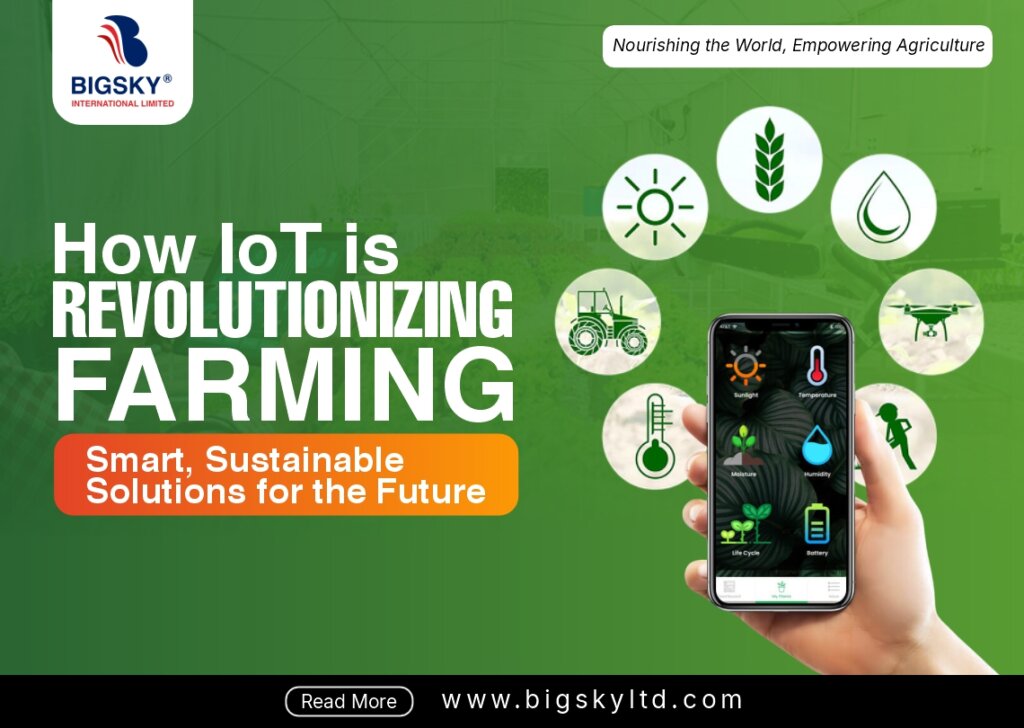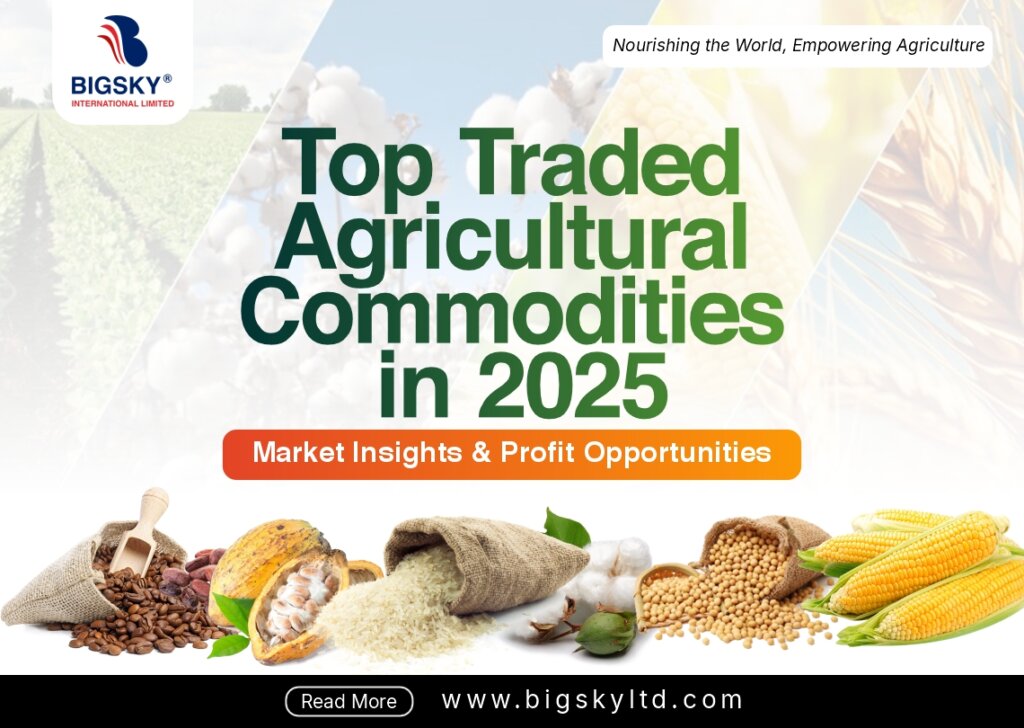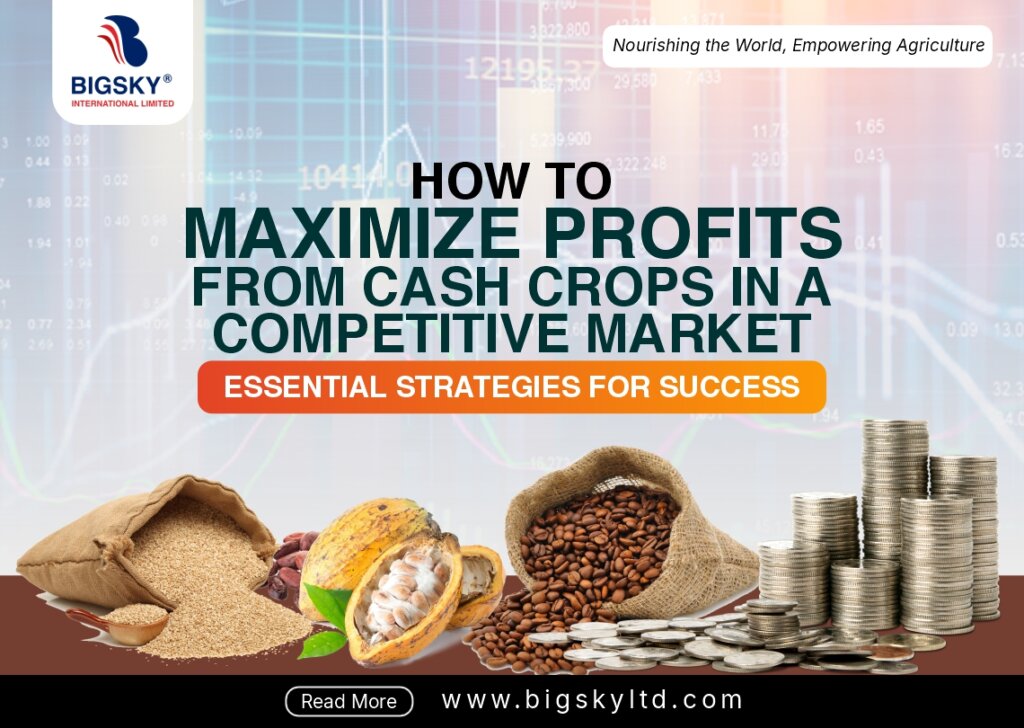Mark, a smallholder farmer in rural Nigeria, had long relied on traditional farming practices passed down through generations. However, on a cold fall morning, he noticed something alarming. His once healthy soybean plants had begun wilting, a sight that threatened the stability of his family’s food supply. Despite his experience, Mark couldn’t pinpoint the problem using conventional methods. This harvest was essential to support his family, but he was unsure how to respond.
Then, a breakthrough occurred: Mark discovered an IoT-based soil sensor provided by an agricultural cooperative. The sensor revealed a rapid decline in the soil pH, which had compromised the viability of his crops. With this data, Mark could quickly apply the proper soil amendments, saving his harvest and livelihood. This marked the first time Mark experienced a moment of hope through modern technology—hope powered by IoT.
The Internet of Things (IoT) in farming is much more than a technological advancement. It represents a transformative shift that helps farmers like Mark make smarter decisions, conserve resources, and create sustainable farming practices that improve food security and protect the environment. As global challenges like population growth, climate change, and resource scarcity loom, IoT is emerging as a pivotal tool to help farmers adapt, thrive, and meet future food demands.
The Global Need for IoT in Farming
By 2050, the global population is expected to reach 10 billion people, requiring a 70% increase in food production. However, the challenges farmers face today—including unpredictable weather, soil degradation, and water shortages—threaten to make this goal unachievable through conventional farming practices alone. IoT offers farmers a way forward, integrating connected devices and sensors to gather and analyze data to optimize crop production, manage resources, and reduce waste. This new era of connectivity promises to create more innovative, more sustainable farming practices that can meet the growing demand for food while preserving the environment.
IoT is key to overcoming the challenges of increasing food production sustainably. Consider exploring IoT solutions to boost crop yields while conserving valuable resources.
How IoT is Revolutionizing Agriculture
The adoption of IoT in agriculture isn’t merely about new technology—it’s about creating systems that drive sustainable, efficient farming practices. IoT transforms the agricultural landscape by enabling farmers to make data-driven decisions, manage resources more effectively, and improve overall crop and livestock health. Let’s look at how IoT is revolutionizing farming:
1. Precision Farming: Data-Driven Decisions for Better Crop Management
Precision farming is one key way IoT is transforming agriculture. By deploying intelligent sensors throughout the farm, IoT helps farmers monitor and analyze soil conditions, moisture levels, temperature, and nutrient content in real-time. These insights allow farmers to make data-driven decisions about when to irrigate, fertilize, or harvest crops.
For example, if sensors detect that a section of the field is too dry, automated irrigation systems can activate to distribute water precisely where needed. This reduces water waste, conserves resources, and optimizes crop health.
Implement precision farming tools to monitor soil health and moisture levels in real-time, reducing costs and improving crop output. Explore IoT solutions for precision farming that provide actionable insights for optimized yields.
2. Drones and Satellite Imaging: A Bird’s-Eye View for Smarter Decision-Making
IoT-powered drones and satellite imaging allow farmers to view their fields from a bird’s-eye perspective. Drones equipped with high-resolution cameras and multispectral sensors can cover large areas quickly, capturing detailed images of crop health, pest infestations, and areas needing attention.
Satellite imaging provides an even broader view, allowing farmers to track crop performance across regions. This comprehensive data enables farmers to make better decisions, improve yield predictions, and minimize environmental impact.
Leverage drones and satellite imaging to enhance crop monitoring and yield predictions. IoT-powered drones can help you spot issues early and take proactive steps for better crop health.
3. Smart Irrigation: Precision Water Use for Sustainable Farming
Water scarcity is one of the most pressing issues in agriculture. Farms must provide enough water for crops while conserving valuable resources. IoT-enabled innovative irrigation systems address this problem by using real-time data from soil sensors and weather forecasts to deliver water only when and where it’s needed.
These systems can adapt dynamically to changing conditions, ensuring crops receive the right amount of water at the right time—this results in healthier crops, reduced water usage, and more sustainable farming practices.
Save water and increase crop sustainability by implementing smart irrigation systems. Adopt IoT-based irrigation technologies that ensure water is applied efficiently, reducing waste and promoting healthier crops.
4. Livestock Monitoring: Enhancing Animal Welfare and Profitability
IoT is also transforming livestock management. Wearable technologies such as smart collars and ear tags allow farmers to monitor animals’ health and behavior in real time. These devices track vital indicators like heart rate, body temperature, feeding patterns, and location.
By gathering this data, farmers can detect early signs of illness or distress, improving animal welfare and reducing the risk of disease outbreaks. This proactive approach to livestock management can lead to healthier herds, better breeding outcomes, and increased profitability.
Monitor livestock health using IoT wearables to track vital signs and behavior. Invest in IoT-powered livestock management systems for improved animal welfare and higher farm profitability.
The Human Side of IoT: Empowering Farmers to Thrive
While IoT offers immense technological advancements, its true power lies in its ability to empower farmers. Mark’s story showcases how IoT is not just about technology—it’s about improving the lives of farmers and their families.
By embracing IoT, smallholder farmers like Mark can overcome the challenges of traditional farming practices, gain better control over their operations, and increase their yield and income. For example, Mark’s adoption of IoT technology allowed him to optimize his irrigation system, reduce fertilizer usage, and improve the quality of his cashews. He now sends his produce to international markets, creating a brighter future for his family.
IoT empowers farmers by providing them with tools to enhance productivity, reduce costs, and improve sustainability. Explore IoT technologies that enable farmers to increase their yield and income sustainably.
Overcoming Challenges: Barriers to IoT Adoption
Despite the promising benefits of IoT, farmers face several challenges in adopting this technology. For many rural farmers, the costs of IoT devices, limited internet access, and privacy concerns can be significant barriers. However, the potential rewards make overcoming these obstacles worthwhile.
Governments, technology companies, and farmers must work together to address these challenges. Investments in infrastructure, training programs, and affordable IoT solutions will help make this technology accessible to farmers worldwide. By reducing costs and increasing awareness, we can ensure IoT’s benefits are felt across all regions, especially rural areas.
Collaboration is key to overcoming barriers to IoT adoption. Work with government programs and tech companies to access affordable IoT solutions and enhance connectivity in rural areas.
A Greener and Smarter Future for Farming
The future of farming lies in creating a more intelligent, more sustainable agricultural system that can meet the needs of a growing global population while preserving the environment. IoT drives this transformation, enabling farmers to optimize resource use, reduce waste, and improve crop and livestock health.
As we move forward, the potential of IoT in agriculture continues to grow. With the right investments in technology and infrastructure, IoT can help create a greener, more resilient farming system that benefits farmers and the global community. The seeds of this transformation have already been sown—it’s now up to us to nurture them and watch them grow.
Unlock the Full Potential of Your Farm with IoT Solutions!
Are you facing challenges in crop management, water conservation, or livestock health? It’s time to take control and transform your agricultural practices with cutting-edge IoT technology. Our IoT solutions can help you:
- Maximize Crop Yield: Use precision farming tools to monitor soil conditions, moisture levels, and more, allowing you to optimize every aspect of crop production.
- Save Water, Increase Sustainability: Implement innovative irrigation systems to ensure your crops get the proper water while conserving valuable resources.
- Monitor Livestock Health: Wearable tech can track animal behavior, early signs of illness, and overall health, leading to healthier herds and better profits.
- Make Data-Driven Decisions: Gain access to real-time analytics to make informed decisions, boost your efficiency, and reduce unnecessary costs.
Ready to embrace the future of farming?
Contact us today to learn how our IoT solutions can take your farm to the next level. Don’t miss out on the opportunity to improve your farm’s productivity, sustainability, and profitability.
Contact us to start your IoT journey and join the growing community of forward-thinking farmers revolutionizing agriculture with innovative technology.





